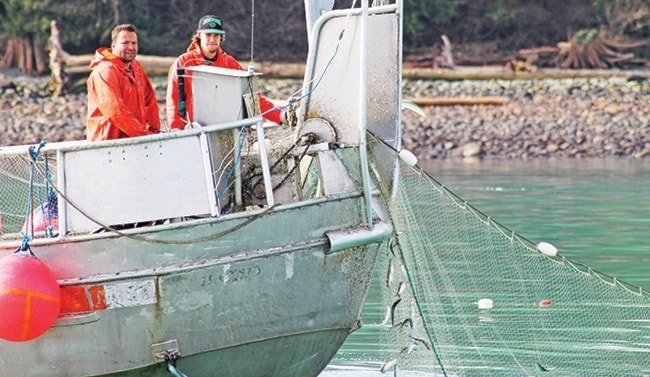The Pacific herring — small, silvery energy-rich fish that band together in a theatrical spawn once a year — have come and gone.
But they've left an oasis of unanswered questions behind.
While the Pacific herring are one of the most abundant fish in B.C.'s coastal waters, many communities have suffered a decrease in stock suspected from overfishing. The main controversies lay on the West Coast of Vancouver Island, around Haida Gwaii and on the central coast where First Nations and various scientists fear the herring are in a fragile state despite the federal government's decision to reopen herring fisheries.
Though herring stocks are struggling to recover in neighbouring waters, here in Parksville Qualicum Beach we're seeing record highs.
VIU Deep Bay Marine Field Station manager Brian Kingzett estimated there were more than 70,000 tonnes of herring in the Strait of Georgia last week—many of which were less than five kilometers from the station.
"It's a great number, it's really high," said Kingzett.
“Stocks are healthy in the Strait of Georgia.”
And because numbers have been steadily increasing, the Department of Fisheries and Oceans (DFO) issued a higher quota than last year, allowing seines to collect 15,440 tonnes of herring and gill nets 13,975 tonnes.
That has some people worried.
“For a species that’s just coming back, being conservative should be a rule of thumb,” Georgia Strait Alliance executive director Christianne Wilhelmson told The NEWS.
Wilhelmson said the government should invest more in science and listen to people who have been watching the Pacific herring for decades.
“The government likes a good news story and being able to show economic success from fishing and selling herring is a good news story, but short term news stories aren’t good for the Georgia Strait,” she said. “Caution is what’s warranted.”
Doug Hay, a retired DFO scientist who spent a majority of his career working with herring, said the spawn has seen a great deal of change.
“Back in the 1950s the quotas were enormous, fisheries were taking in excess of 200,000 tonnes of herring. Now the quota is almost one-tenth of that,” said Hay. “It’s much more conservative.”
While he admits most of the controversy around the herring spawn isn’t associated with the Georgia Strait right now, he’s “particularly concerned about the wellbeing of herring spawning areas.”
In the last 20 years, Hay said he’s noticed a shift in the locations of the spawn.
“The herring spawn has tended to concentrate on the east side of Vancouver Island, mainly between Ladysmith and Comox and it has diminished south of there,” he said. “We’re not sure why it moves but it has.”
Hay said the Lambert Channel between Denman and Hornby Island is one of the “most important herring spawn areas” in the province and he fears aquaculture developments may threaten it.
Hay said the herring like protected water at a certain temperature, but other than that, it’s unclear why herring gravitate to certain spots.
“If you change those qualities, the herring might not stay there and you don’t want to mess with the most important spawning areas,” he said. “Once you destroy a herring spawn area you might never get it back.”
Kingzett called the herring spawn “the greatest natural phenomena of this region.”
He explained that every year around this time, though nobody knows exactly when or where, schools of herring will come back in from offshore.
“Once schools are ripe, some pheromonal trigger causes them to simultaneously spawn — that’s what is turning the water that milky colour,” he said. “The males are basically dousing all the eggs with sperm.”
Kingzett said the spawn will discolour the entire coastline.
Alongside the fish, fowl and mammals who come in to feast on the herring, commercial fishing fleets are eager to fill their quotas. Primarily, fishermen are after herring eggs — roe — which are exported in masses to Japan where they are considered a delicacy and often found in sushi.
“They only take the roe,” Kingzett said, noting it’s one of the criticisms the fishery faces. He said the males and the empty bodies of the females are often used in fish meal or animal feed.
Because of their abundance, the herring are a cornerstone in the marine food web providing nourishment for wildlife, and historically, sustaining coastal First Nations for thousands of years.
“The cool thing to me is winter salmon come in for this, thousands of sea lions, migratory sea birds base their migration on following the herring which starts in California and goes to Alaska — the silver wave,” said Kingzett.
“I like to call it the marine version of the cherry blossom festival — it’s a true sign that spring is here.”
